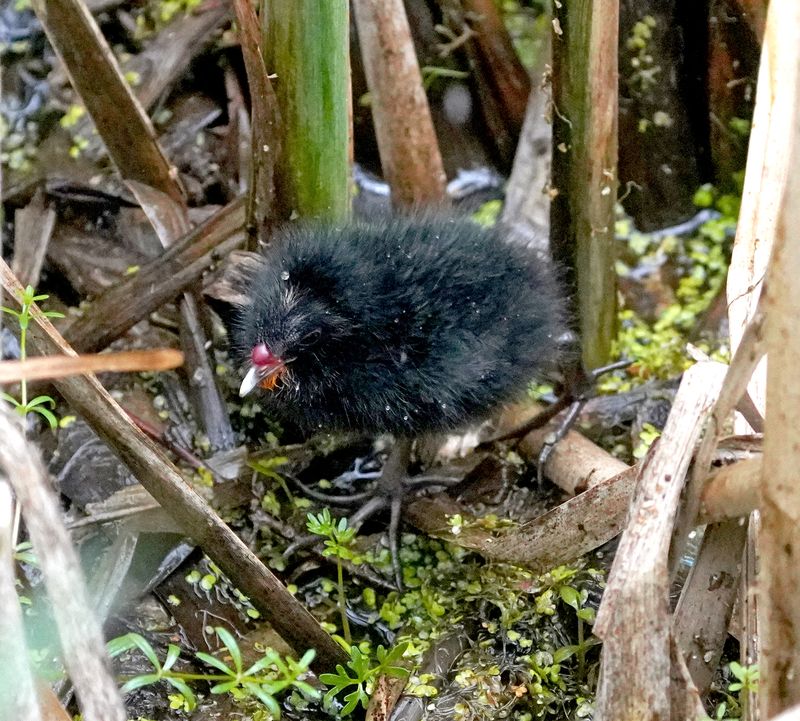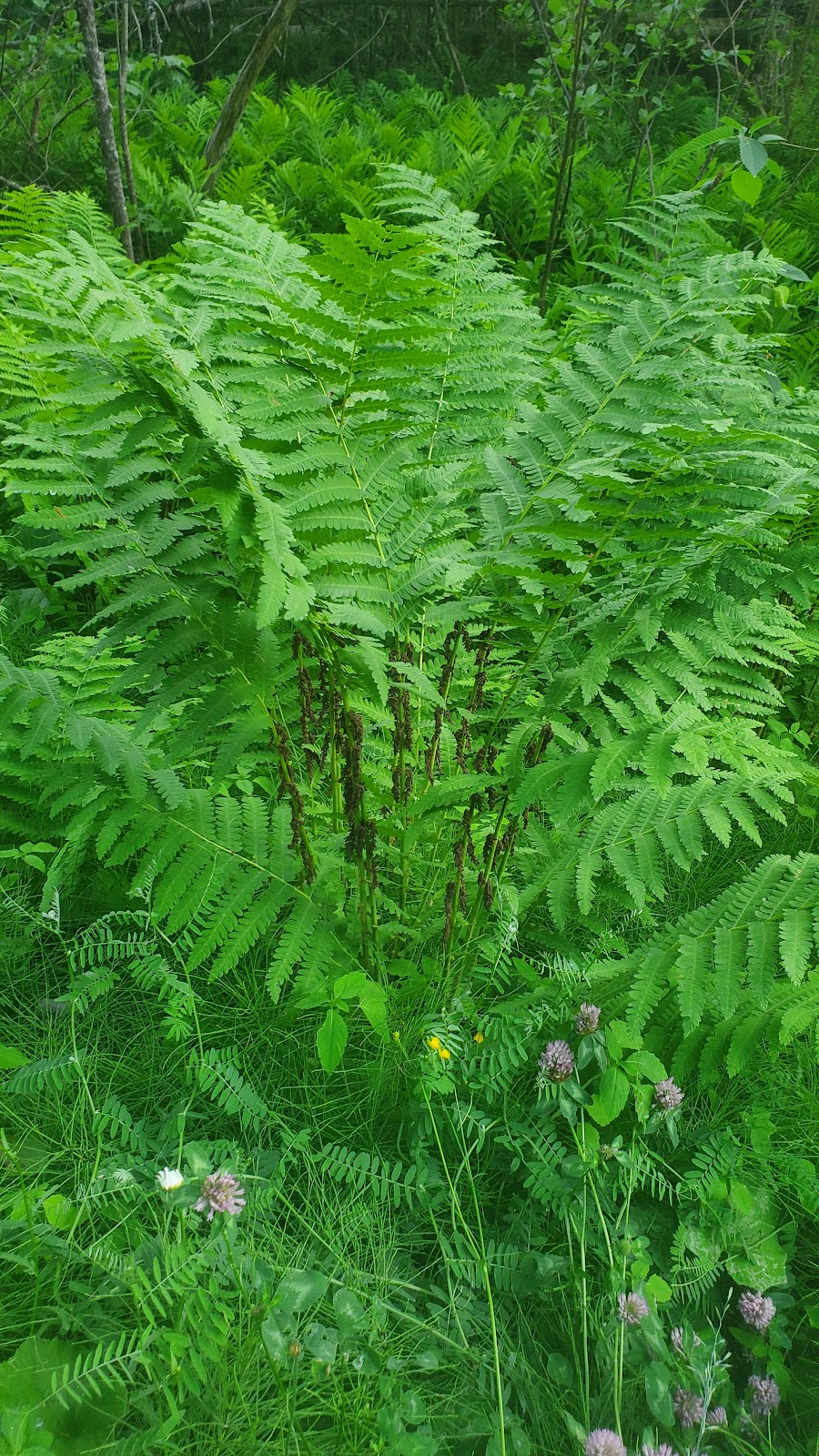NATURE
MONCTON NATURE NEWS
June 27, 2025
Nature Moncton members, as
well as any naturalist in New Brunswick or beyond, are invited to share
their photos and descriptions of recent nature sightings to build a fresh
(almost) daily edition of Nature News
To
respond by e-mail, please address your message to the information line
editor, nelsonpoirier435@gmail.com .
Please
advise the editor at nelsonpoirier435@gmail.com and the proofreader
Louise Nichols at Nicholsl@eastlink.ca if
any errors are noted in wording or photo labelling.
For more information
on Nature Moncton, check the website at www.naturemoncton.com
Proofreading
courtesy of Nichols nicholsl@eastlink.ca
The
live feed of the Peregrine Falcon nest cam on the summit of Assumption Place in
Moncton has been terminated for the season, as it appears that all 3 chicks
have fledged successfully, leaving us with the empty nest syndrome!
**A heads up to slot off tomorrow, Saturday morning, June 28, for the Nature Moncton field trip to visit the Pickard Quarry nature site in Sackville. All details below:
**Nature Moncton field trip
10:00-12:00,
June 28, 2025 (rain date June 29)
Pickard
Quarry Nature Park (Sackville)
Leader:
Richard Elliot
The site of
the former Pickard Quarry in Sackville has evolved from industrial glory to a
nature park and wetland area that is becoming a must-visit site for Sackville,
similar to the Sackville Waterfowl Park, but with rolling wooded slopes and low
rocky cliffs surrounding two quarry ponds. These varied habitats have attracted
many bird species and other wildlife, as well as a diverse flora with native
and non-native species.
This
protected area is approximately 5 hectares in size and is now crossed by a
network of 3 nature trails and smaller side footpaths, winding through the
naturalized woodland and wetland area that has become a wildlife sanctuary. The
rambling pathways total approximately a kilometre in length and may take us 1
to 1 ½ hours to cover at naturalist speed.
This park is
a joint effort of the Tantramar Outdoor Club (TOC), Chignecto Naturalists’
Club, and Tantramar Heritage Trust, along with the Municipality of Tantramar,
and their work on improving footpaths and providing interpretive signage is
still underway.
Richard
Elliot is the retired wildlife biologist coordinating this project for the TOC,
and he’ll begin our visit with a 15-minute introduction on the incredible industrial
history of this former sandstone quarry and recent progress to improve
accessibility and awareness for visitors.
We’ll meet
at the top of Quarry Lane, and folks should put Quarry Lane, Sackville
in their phone or car GPS to get to the right place. Richard suggests that most
use the Mount Allison Parking lot at the corner of Salem and Park Streets,
though some can park at the end of Quarry Lane. A contact phone number, if needed, is
506-866-2752.
As always,
all are welcome, Nature Moncton member or not.
Deanna Fenwick
shares some beautiful photos of bird activity she has enjoyed at Sackville
Waterfowl Park over the past week.
There are at
least four pied-billed grebe nests at the Sackville Waterfowl Park - two with young. One nest has five little ones who are just now venturing out occasionally
from the nest. There is also a sora with four or five chicks. The interesting
thing is that they all seem to be staggered in age. That's why Deanna included two chicks, which clearly show one getting its coloured feathers and the other
still jet black and smaller. They are quite close to the observation tower.
Across the path are a couple of red-eyed vireos, which Deanna is sure
must be nesting as they stay right around there.
(Editor’s
note: It is suggested that, as tomorrow’s visit to Pickard Quarry ends at
noon, participants take a lunch break and then head for the Sackville Waterfowl
Park to visit some of the patrons Deanna has mentioned.)
**The short-tailed
swallowtail butterflies, with their very restricted worldwide range, are at their prime best at the moment, where they can be witnessed in
good numbers at Hay Island.
Aldo Dorio
got an excellent photograph of the pleasant number present at Hay Island on
Thursday.
Nelson
Poirier paid a visit there on Thursday as well to experience this phenomenon
and captured many photographs, which will hopefully be ready for tomorrow’s
edition.
Aldo also shares a photo of willets
from several years ago in a mating display that shows the awesome fluorescent
white banding on the wings when they are in the extended open position, which
we only see in flight or in a mating display, as Aldo has captured.
**Shannon
Inman photographed a pair of killdeer that were around a puddle in a
parking lot in Moncton.
Shannon also
photographed a bullfrog, a green immigrant weevil, and she got a distant
photo of an eastern meadowlark that was accompanying starlings near the
local store in Riverside-Albert.
**Barbara
Smith and Maureen Girvan send some of the photos captured during the Wednesday
evening walk to Mapleton Park, including ferns, lichen, and Oyster mushroom, and that doe White tailed
Deer that made a sudden surprise appearance!
**Brian
Stone visited Fred and Susan Richards on Thursday evening to try his hand at firefly
photography, but the fireflies were not out and as active as they usually were,
so he did not have many little lights to fill his photos with. He decided to
try long exposures with his cell phone, and after a few attempts, the cell
phone seemed to merge or stack a few of them together to form a very short
video clip, a process that Brian was unaware of. He may try again if conditions
improve and the bright insects become more active.
**This
Week’s Sky at a Glance, 2025 June 28 – July 5
Monday is International Asteroid Day, an annual event sanctioned by the
United Nations in 2016 to raise awareness of the potential hazards and benefits
of asteroids. On June 30, 1908, a 60-metre wide stony asteroid (or a somewhat
larger comet) exploded at an altitude of eight kilometres over the sparsely
populated region of the Tunguska River in Siberia, about 700 km northwest of
the northern tip of Lake Baikal. At 7:17 am local time a tongue of flame split
the sky, followed by loud bangs, ground-shaking tremors and a hot wind of
hurricane force. A seismic event was recorded 900 km south, and a
microbarograph in England recorded a pressure event five hours later and again
a day after that.
Expeditions were led two decades later by Leonid Kulik to locate and interview
eye witnesses and to locate the crater and meteorites. No crater or meteorites
were found, but there was an area of 2100 square kilometres where trees were
blown down in a radial pattern. Those trees in the middle of the destruction
remained standing with their limbs stripped.
To celebrate Asteroid Day try to locate the brightest asteroid, Vesta, about
two binocular fields left and two up from Spica. It will look like a faint star
in binoculars, and a good star map will be needed to distinguish it from the
background stars. The traditional method is to carefully sketch the star field
and return the next clear evening to see which one has changed position
relative to the others. The Heavens-Above website has wide-field and detailed
inset maps, with north at the top, for the brightest asteroids. The inset map
is about the size of the field of view seen with common binoculars.
This Week in the Solar System
Saturday’s sunrise in Moncton is at 5:30 and sunset will occur at 9:14, giving
15 hours, 44 minutes of daylight (5:38 and 9:16 in Saint John). Next Saturday
the Sun will rise at 5:34 and set at 9:12, giving 15 hours, 38 minutes of
daylight (5:43 and 9:14 in Saint John). Earth is at aphelion, its farthest from
the Sun, on Thursday at a distance of just over 152 million kilometres.
The Moon
is below Mars this Sunday evening and near Spica on Thursday. It is at first quarter
Wednesday with the Lunar X appearing around sunset. Mercury is at
greatest elongation from the Sun next Friday, setting 80 minutes after sunset.
Racing eastward below the belly of Leo the Lion this week, Mars is setting
around midnight. About an hour later Saturn will be rising in the east.
Early in the week Venus will be within a binocular view to the right of Uranus,
and by next weekend it sits half a binocular view below Uranus. With Neptune
even closer above Saturn this is a good week to locate the solar system’s two
ice giants. Jupiter is too close to the Sun for morning observing.
Tune in to
the last Sunday Night Astronomy Show until after Labour Day at 8 pm on the
YouTube channel and Facebook page of Astronomy by the Bay. The Saint John
Astronomy Club meets in the Rockwood Park Interpretation Centre at 7 pm on July
5.
Questions? Contact Curt Nason at nasonc@nbnet.nb.ca.
Nelson Poirier.
Nature Moncton






















